
The goal of this program is to teach students self-rescue skills & basic water safety to help in preventing the risk of drowning.
Topics Covered in SDOC Safety & Survival Swimming Program
1. Personal Water Safety
- Jump, Push, Turn, Grab
- Swim, Float, Swim
- Survival Float
- Treading
- Safe Water Exit: Elbow, Elbow, Belly, Knee
2. Safe Rescue of Others
- Reach or Throw, Don’t Go!
3. Use of Personal Flotation Devices
- Proper Fit
- Put on PFD (on land & in water)
4. Cold Water Survival Techniques
- H.E.L.P. (Heat Escape Lessening Posture) Float
- Shoulder to Shoulder Survival Huddle/Circle
- Floating Carpet (Modified) Formation
- Cold-Water Gasp Reflex Drill
5. Introduction to Boating Safety
- Canoe: Safe Boarding; Recovery from the Water
- Self-Recovery from Under Floating Object: Hand over Hand ‘Walk’ Out
Photo & Video Gallery
Frequently Asked Questions
The Safety & Survival Swimming Program has been added to the School District of Oconee County 3rd Grade Curriculum. This program has been built into the 3rd grade schedule, therefore, your student will not be missing other instructional time while participating in the Safety & Survival Swimming Program. During regularly scheduled school hours, your student will travel via school bus from their school to the Foothills Area YMCA. The Safety & Survival Swimming Program is a 4 day program (Monday, Tuesday, Wednesday & Thursday). Students spend 90 minutes a day (including time to change after swimming – students should arrive at school wearing their bathing suit under their clothing) at the Foothills Area YMCA for water safety instruction. The Safety & Survival Swimming Program is not a field trip for students, it is part of the planned instruction for your child’s 3rd grade year.
Students are divided into small instructional groups based on their swim level. The average student to instructor ratio is 5 to 1, not including the lifeguards on the pool deck. The groups will rotate through learning stations around the pool. All students will participate in all learning stations. The instructors will tailor each learning station to the swim abilities of each group. For more specific information regarding the skills covered in the Safety & Survival Swimming curriculum please refer to the Topics Covered in SDOC Safety & Survival Swimming Program section of this website. For those students who are unable to participate in the pool (e.g., broken arm), there will be land activities / learning offered when possible.
On the Permission Slip you will evaluate your student’s swim ability by selecting the description that best describes your student’s level of comfort / skill in the water. Please feel free to add any comments in the space provided that would help the YMCA to best accommodate your student. Students will be assigned by their skill level to best maximize the water safety and swim instruction.
Each school comes to the Foothills Area YMCA for 4 days (Monday through Thursday) for the Safety & Survival Swimming Program. The Friday night of the same week will be your student’s Friday Family Fun Night. During Friday Family Fun Night, your student and all members of your family are welcome to come swim for free. Friday Family Fun Night will take place from 6:30 – 8:00 p.m. At 7:00 p.m., the students will demonstrate the skills they learned during the SDOC Safety & Survival Swimming Program. The remainder of the time will be free swim for students and their families. Upon arrival, please check in with the Welcome Desk.
All of our volunteers are background checked and go through Child Abuse Awareness training. Additionally, all volunteers undergo training on the specific skills taught in the Safety & Survival Swimming Program.
All 3rd grade students in Oconee County will participate in the Safety & Survival Swimming Program at the YMCA. Other than completing the Parent Permission slip and answering the questions listed on the permission form, you do not need to separately register your student with the YMCA.
Your student should arrive at school wearing their bathing suit under their clothing. After swimming, students will change out of their bathing suits at the YMCA. Please be mindful of the difficulty of changing into some types of clothing when wet. It is recommended that you dress your student in clothing that is easy to change into. On the first day, all other equipment (towel, undergarments [needed for changing post-swim], t-shirt (non-cotton) or rash guard [to wear in water if student would feel more comfortable], brush/comb, hair tie [if needed], glasses case [if needed]), should be in a plastic grocery bag. Each student will be given a drawstring bag to keep upon arrival at the Y.
If your student forgets their bathing suit or other swim equipment, please make every effort to drop it off directly at your student’s elementary school. If necessary, the Welcome Desk at the YMCA can accept their equipment. A limited number of bathing suits will be available for students in need of swim attire.
Unfortunately, for the safety of all students, you are not permitted to observe the program live. (Some teachers may live stream the water instruction, however, this is on a school by school basis.) As all of our volunteers must be background checked and undergo training to work with your students, we cannot allow members of the public access to the pool deck while the Safety & Survival Swimming Program is underway. Additionally, parent presence would be a distraction for the students.
If SDOC should cancel a day of school during your student’s assigned week, your student’s school will keep you posted regarding any makeup date(s). If there is inclement weather or mechanical issues and students cannot be in the pool, the YMCA will pivot to land learning activities with the students.
Unfortunately, there is not an option for your student to attend an alternative week.
Ways You Can Reinforce Water Safety With Your Student
You can help your students to continue practicing Safety & Survival Swimming skills by talking about these important water safety topics:
When should you call 911?
- Call 911 if you think a person is in trouble and there is no adult nearby.
What do you tell the 911 operator?
- Your first and last name.
- The address of your location.
- The telephone number you are calling from.
- What happened and how many people are hurt.
- Stay on the phone – do not hang up!
What is CPR?
- Cardiopulmonary Resuscitation (CPR) helps maintain vital blood flow from the heart to brain.
How can you help if someone needs CPR?
- If someone doesn’t respond, check for breathing and a pulse. When you can’t see, hear, or feel any signs of breathing and you can’t find a pulse after 10 seconds, the person likely needs CPR.
What are some things you can do to keep yourself safe in a backyard pool?
- Don’t swim without permission or without adult supervision.
- Ask an adult for help if you want something in or around the pool.
- Keep your hands, fingers, feet, and toes out of openings in the pool (such as grates).
- Don’t swim or play in hot tubs or whirlpools.
What do pool drains do?
- Pool drains pull water into the filtration system so it can be cleaned and returned to the pool.
Why can pool drains be dangerous?
- Swimmers can get stuck on a drain in deep water and not be able to get to the surface.
What two rules should you follow related to drains?
- Don’t swim or play around pool drains.
- Don’t swim in a pool that is missing drain covers.
What is it? How can it happen?
- Holding your breath and swimming underwater for a long time can cause a person to black out or lose consciousness.
How do you prevent hypoxic blackout?
- Don’t hold your breath and swim underwater for long distances.
- When swimming underwater, always have a buddy.
What is hypothermia?
- Your body loses heat faster than it can produce heat – leading to a dangerously low body temperature.
What causes hypothermia?
- Prolonged exposure to very cold temperatures.
- Submersion in cold water.
Signs of Hypothermia:
- Shivering
- Feeling very tired
- Confusion
- Fumbling hands
- Slurred speech
- Drowsiness
- Memory loss
What do you do?
- Warm up the person gradually.
- Hypothermia is a medical emergency! Get help immediately!
- Check weather before going boating!
- Don’t overload the boat- overloading can cause the boat to capsize.
- Have enough appropriate PFDs (Personal Flotation Devices).
- Stay hydrated! Bring water. Bring food.
- Don’t go boating alone.
- Written Float Plan: Tell someone on land where you are going, for how long, and with whom. Text or email your float plan to your contact.
- Wear clothing appropriate for the season. Layers if cold. Also bring sunscreen, hats, and sunglasses. Non-skid closed toed shoes.
- Some things to Bring: whistle/horn/bell, paddle, bailer, anchor, compass, basic tools, First Aid Kit, and VHF radio. Also, verify the boat’s drain plug is in.
PFDs: Why should you wear one?
- If not a strong swimmer, you should wear a United States Coast Guard approved PFD.
- In SC, all children under 12 years of age are required to wear a U.S.C.G. approved PFD when on board a vessel less than 16 feet long.
- Wearing a PFD gives you a better chance of survival if in a boating accident.
- You are easier to spot/locate if you wear a PFD because of its bright colors.
- Life jackets can save lives, but only if you use them!
- In cold water, don’t move or swim without a purpose. Stay still.
- Don’t panic.
- If you see a boat or floating object, then swim towards it. Number one priority is to get yourself out of the water as soon as possible.
- H.E.L.P. (Heat Escape Lessening Posture) Float: use when alone wearing PFD & not near shore.
- Shoulder to Shoulder Survival Huddle/Circle: keeps group together & shares body heat.
- Floating Carpet Formation: keeps group together & shares body heat. To prevent hypothermia, try to keep as much of body out of water as possible. This also creates a larger target for rescuers to spot.
- Cold-Water Gasp Reflex:
- When a person falls into cold water, humans gasp uncontrollably – an involuntary response.
- The person can aspirate water and drown. The person needs to get control of their breathing!
- To fight against gasping / to combat the gasp reflex, hold your breath and try to keep from gasping for as long an interval as you can. This will be difficult, but, if you hold your breath for short durations, the effects of the gasp reflex will slowly ebb. Do not panic – stay calm.
- Canoe drill: allows students to get a feel for how unstable a boat can be, to practice how to properly enter a boat, and how to recover from the water.
- Self-recovery from Under Floating Object (Mat): this drill simulates being trapped under a capsized boat or under a sail. In this situation, ‘walk’ out hand over hand & pick a direction without changing- do not switch direction underwater!
- Survival Float: if you end up in the water without PFD, use the survival float. This conserves energy so you can survive in water for long periods of time.
Volunteering


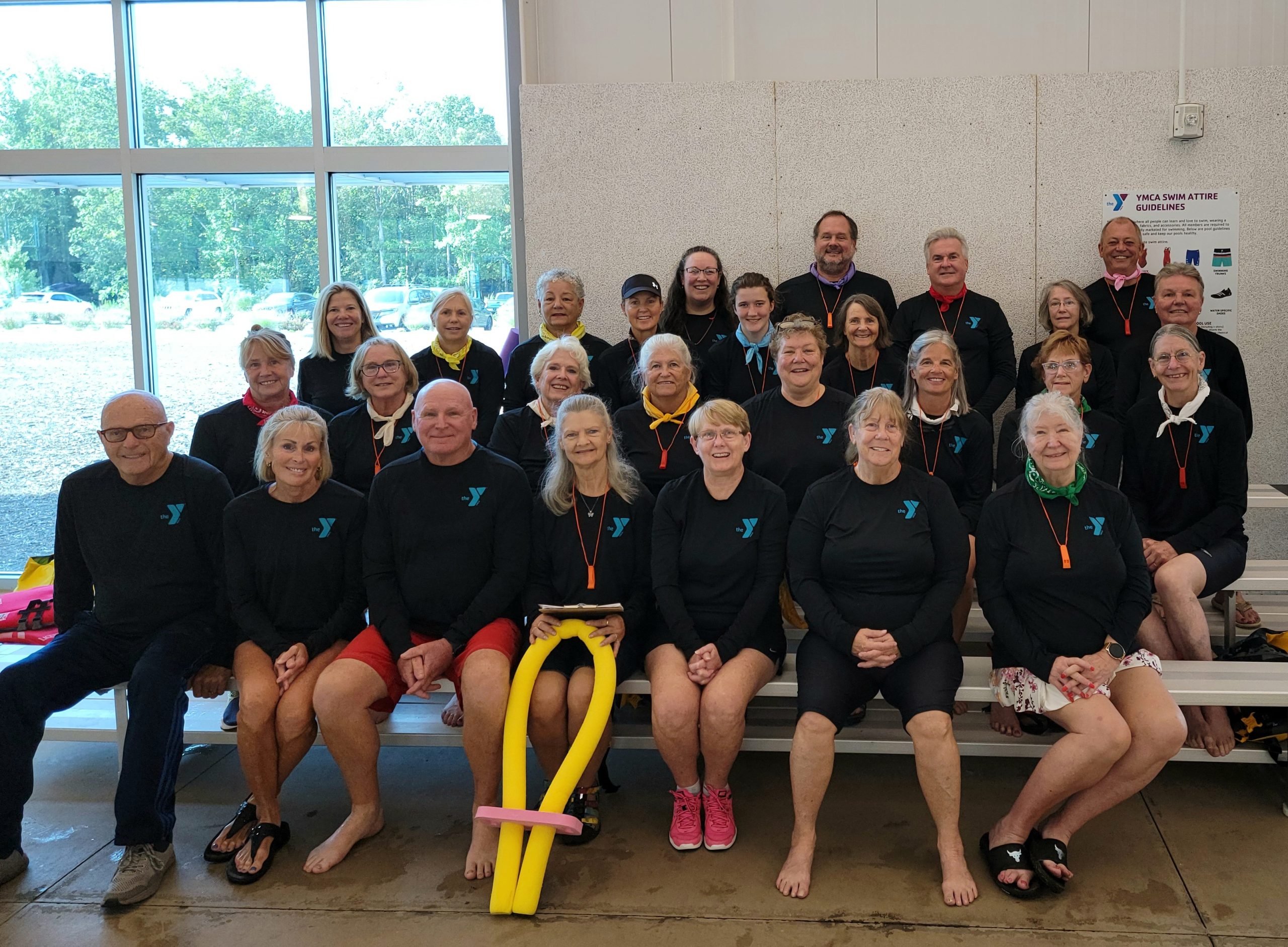
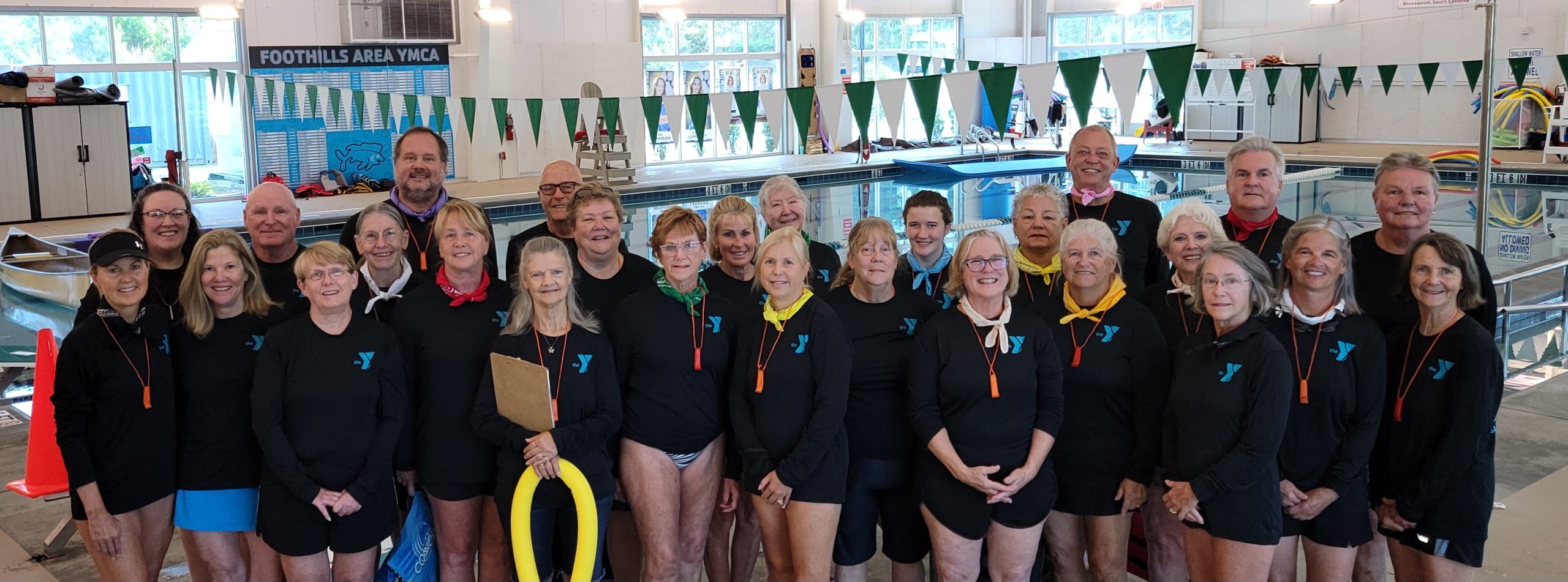
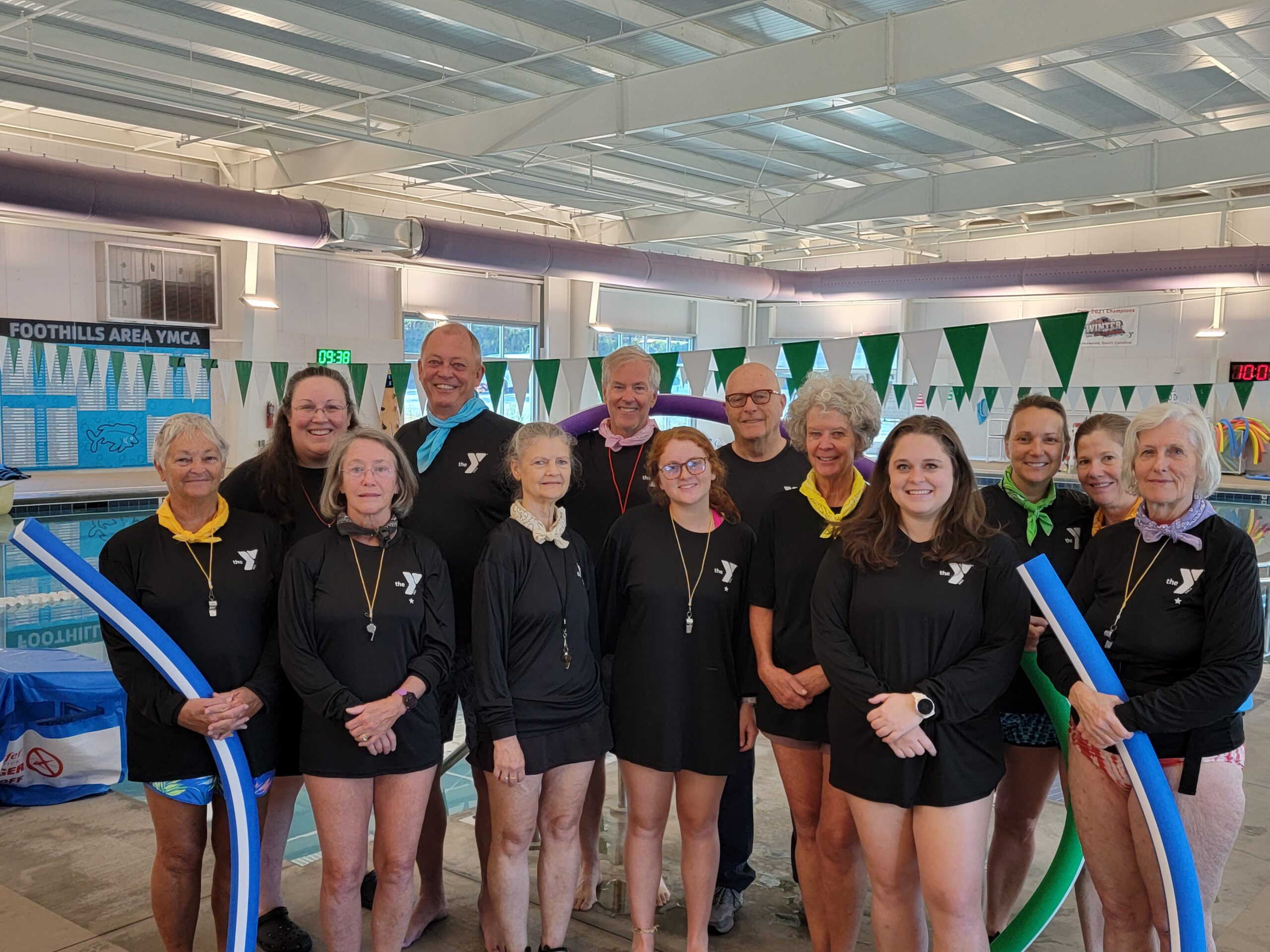
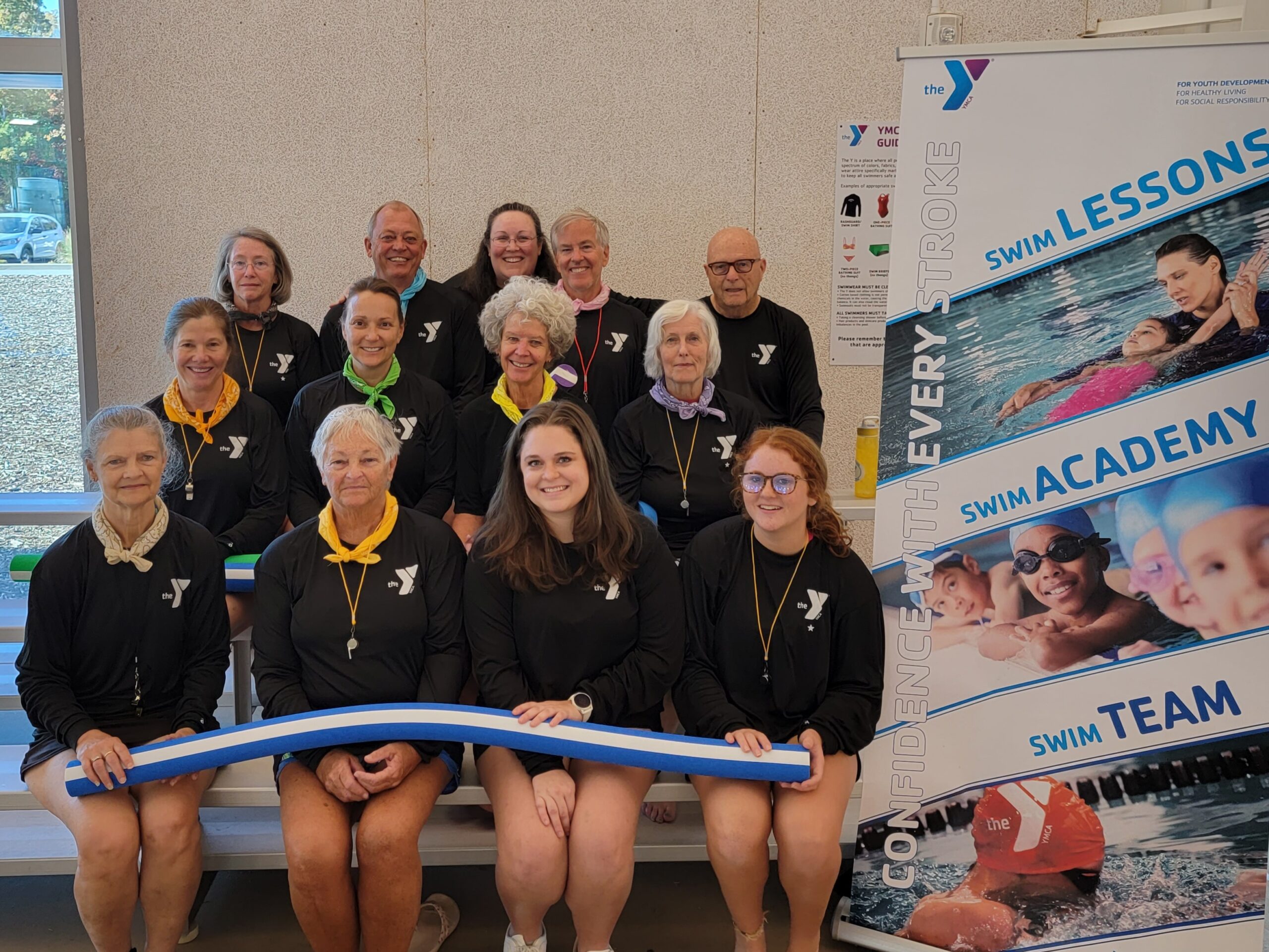
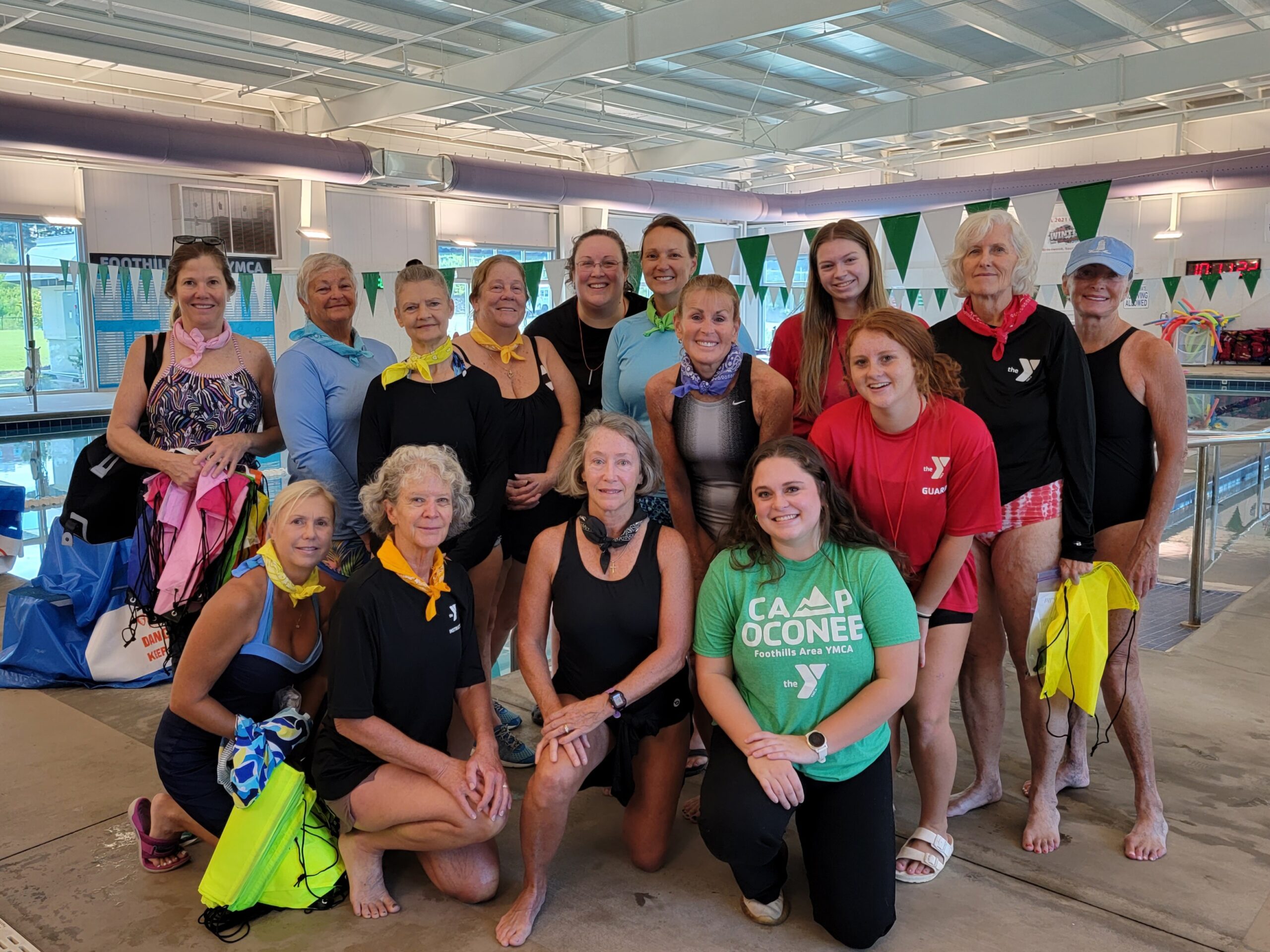

Resources
More Information about Swim Lessons at the YMCA after the SDOC Safety & Survival Swimming Program
The Y pioneered the practice of swim lessons over 160 years ago and has taught generations of families how to swim. Our swim instructors teach progressive, skills-based swim lessons for all ages, from infants to seniors. Water safety is our main focus, along with swim readiness, stroke development and establishing a lifelong, healthy approach to water, exercise and fun.
Our swim lessons are available in both group and individual settings. For more information and to register, please visit faymca.org/programs/
![[FOOTHILLS AREA YMCA LOGO SQ]](https://recliquecore.s3.amazonaws.com/imgs/ymca_logos/named_y/blue_purple.png)
![[FOOTHILLS AREA YMCA LOGO FULL]](https://s3.amazonaws.com/recliquecore/imgs/ymca_logos/named/blue_purple.png)